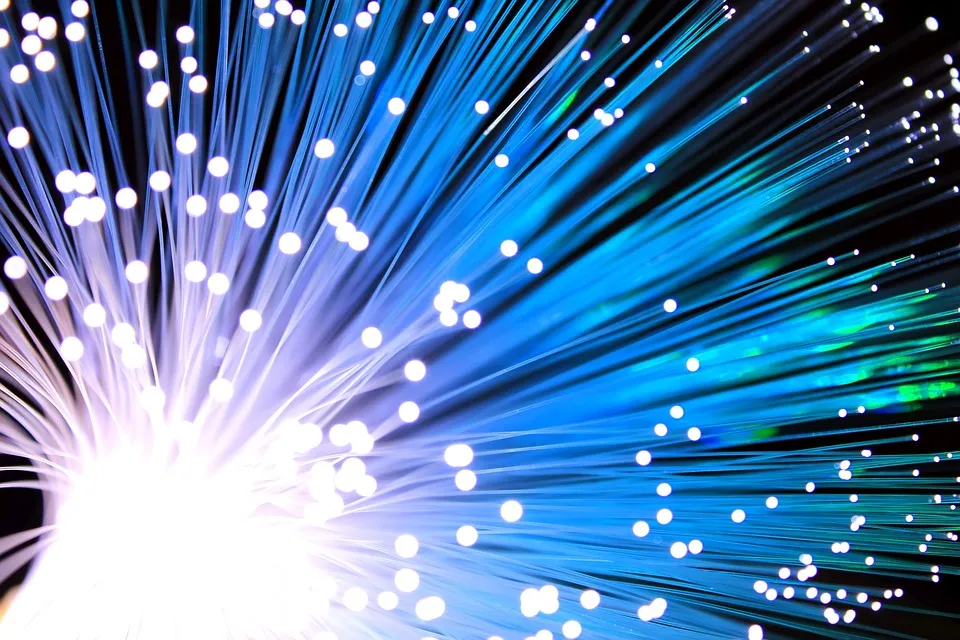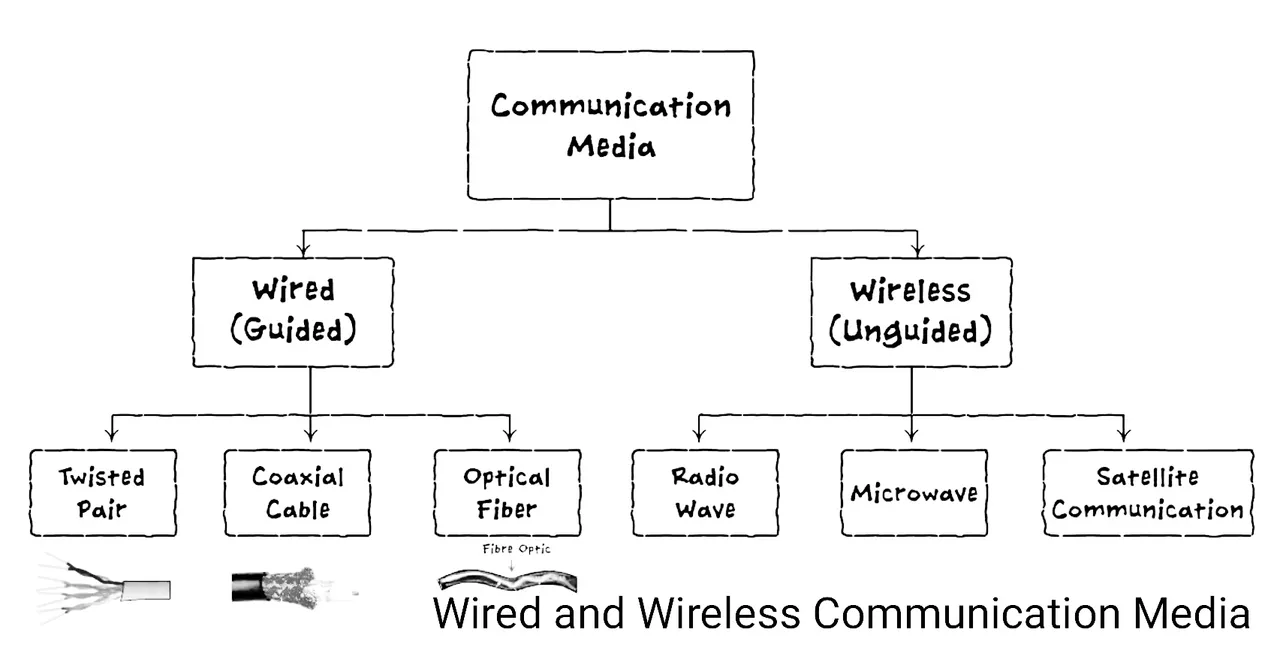As a child, my siblings and I had come to know December as the month for Christmas decorations. So, once it was December 1st, we would pull out the bags and cartons of Christmas decorations and trees. Oh no, we used plastic trees! Among these things, my favourite was a silvery-white table-top tree. It had an electrical connection which when plugged would shine tiny light at the tip of the tiny strands. This is no need to describe the whole thing, I have a picture below.

Actually it was a little bit more like the image below. It was easy to see that the source of light was the disk-shaped plastic that also functioned as the base but what fascinated me was was how the light was transported from there to the tip of each tiny strand while the remaining length of the strand remained almost opaque.

It turned out that the tiny strands are fibres made out of drawing glass or silica and covered or clad with another material with different reflective properties from the fibres. Together, this is called Optical Fibre or Optical Fiber depending on which country you are in.
A Reminder
The thing about physics is that once you learn a concept, you are not allowed to forget because as sure as rain, whatever concept you learned in the past would find a way to sneak up on you when you least expect it. It is this interconnection of phenomenon that gives us the reality we experience as life. So, may I remind you of electromagnetic waves and the part they play in communications engineering? We were told that electromagnetic (EM) waves are propagated due to interactions between electrical and magnetic fields generated by making electric conductors vibrate in a certain way, at certain speeds.
Visible light is one of these EM waves. Of course, this means that light would have some of the properties as other EM waves like radio waves, microwave and infra-red. We know from basic radio broadcasting discussed here that we can embed audio signals (information) on radio waves and broadcast the signal to radio sets tuned to specific frequencies. It turns out that light waves can also be used to transport information at high speeds through Optical Fibres. Before we have a detailed look at optical fibres and how they serve as a channel in a communication network, I would like to show an overview of the different media that are available for use in communication networks to transport information.

Optical Fibre
A friend of mine told me that my posts are often too long. Well, dear friend, explaining these things in lay terms takes a lot of explaining.
Optical Fibre is a medium that transmits information by sending optical signals down the strands of extremely pure drawing glass or plastic fiber. The light passes through the center of the fibre called the core, which is surrounded by an optical material called the cladding. The cladding is able to trap the light in the core based on the concept of Total Internal Reflection. [1]
Total Internal Reflection
Imagine for a moment, that you are standing by a pool side with a pole with which to measure the depth of the pool of water. If you are at all serious about obtaining an accurate measurement, you would place the pole straight up. This means it would be perpendicular to the water surface or, in other words the pole would be at right angles(or 90 degrees) with the surface of the water. If you look at the portion of the pole inside the water, you would notice that it appears shorter or slightly displaced from the position where it ought to have been. This visual distortion describes the change in direction of light as it travels from one medium to another and it is known as Refraction. You would experience this distortion because the light coming from the part of the pole that is submerged would change direction at the interface between the water and the air.
Refraction happens when light passes from one medium to another medium with a different refractive index. Refractive index is a dimensionless quantity which describes how fast light propagates on a medium in comparison with the speed of propagation in vacuum and is mathematically defined as n = c/v where c is the speed of propagation of light in a vacuum, v is the speed of propagation of light in the medium and n. Not to get you too involved in math, but the implication of this mathematical relationship is that if a medium is said to have a refractive index of 1.33, it means that light is 1.33 times slower in that medium than it is in vacuum. Excellent.
In our image of Fig. 3, the blue medium (water) obviously has greater refractive index. We know this because when light moves from a medium with low refractive index to a medium with a higher refractive index, the light is refracted closer to the normal (or closer to the pole in our example). If however, light moves from a medium of higher refractive index to a medium of lower refractive index, the light ray is refracted away from the normal as shown in Fig. 4

Now, here is the meat of the gist: as we keep adjusting the angle at which the light within the medium with higher refractive index, making it larger each time, the refracted ray keeps getting farther and farther away from the normal until we reach the critical angle. The critical angle is the angle of propagation at which the refracted ray is perpendicular or 90 degrees to the normal. In other words, at critical angle, the refracted ray lies along the boundary between the two media. What happens if we exceed the critical angle?
Well, once we exceed the critical angle, there would no longer be any refracted ray to speak of because the refracted ray of old now exists inside the medium with higher refractive index (water, in Fig. 4). This situation of things is called Total Internal Reflection and it exactly what happens to light propagated in an Optical Fibre. In the case of optical fibre, the the refractive index of the core is higher than the refractive index of the cladding.
Uses, Applications, Advantages of Optical Fibres and a Few Final Words
The exact technology or means by which data is embedded in the light that bounces down the optical fibre was deliberately missed from this discussion for the sake of brevity. While the whole process of propagating light in an optical fibre seems like a cool trick on its own, it turns out that the technology has found a large number of applications.
Other Uses for Optical Fibre
Optical fibre technology, apart from its obvious use as a transmission medium in communication networks, other technologies that use it include:
- Computer networks, because of the large amounts of data it is capable of transmitting per second, less attenuation achieved from years of improvement of the technology, and no interference unlike traditional twisted pair cables
- Broadcasting
- Medical scanning (fibroscopy which is a kind of endoscopy), and;
- Military equipment used for remote sensing.
I hope this has been informative for you. Thank you for visiting my blog.
Unless referenced to a source, images are original images.
References
If you write STEM-(Science, Technology, Engineering, and Mathematics) related posts, consider joining #steemSTEM on steemit chat or discord here: https://discord.gg/vwzWz3Z

